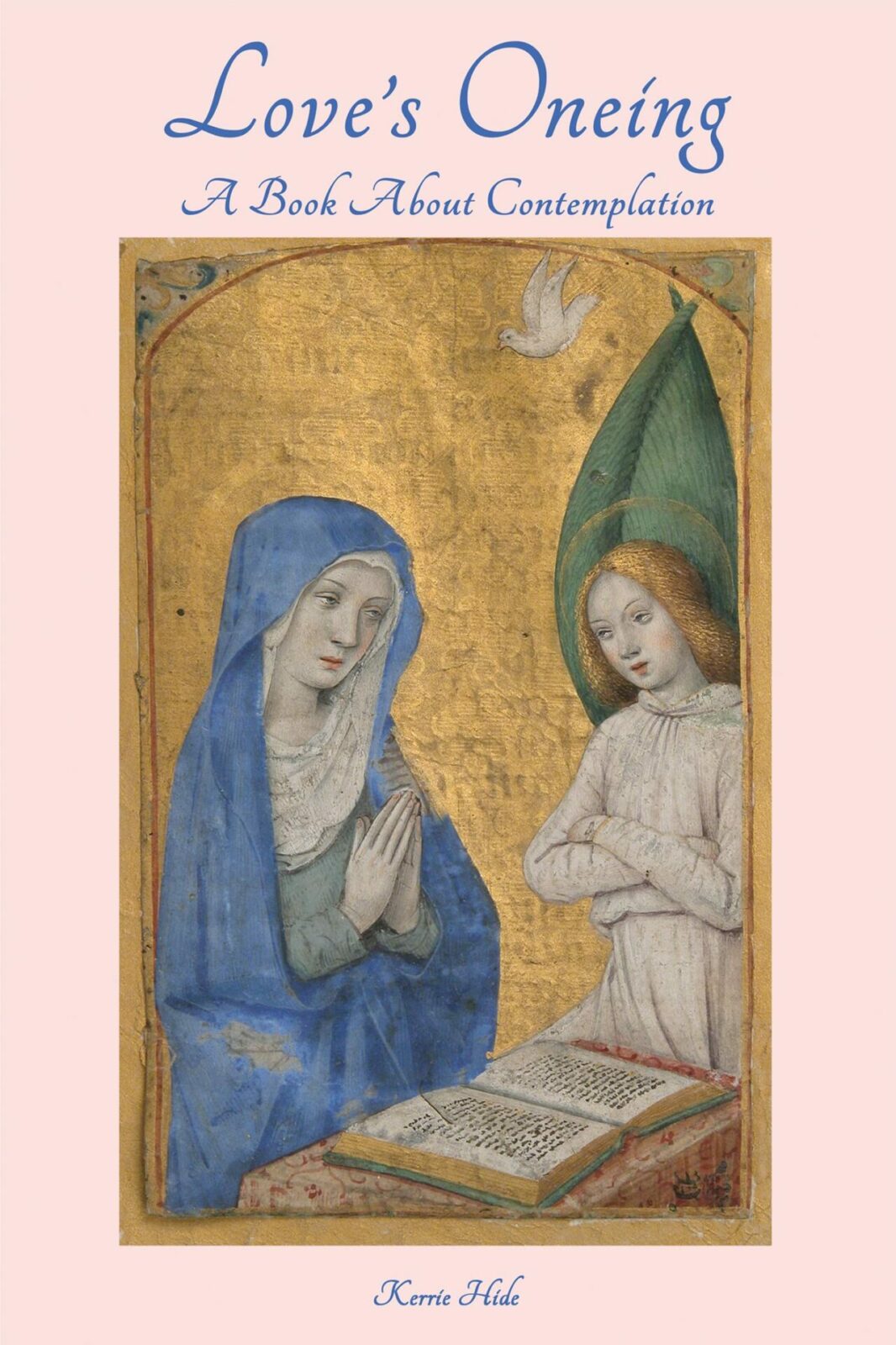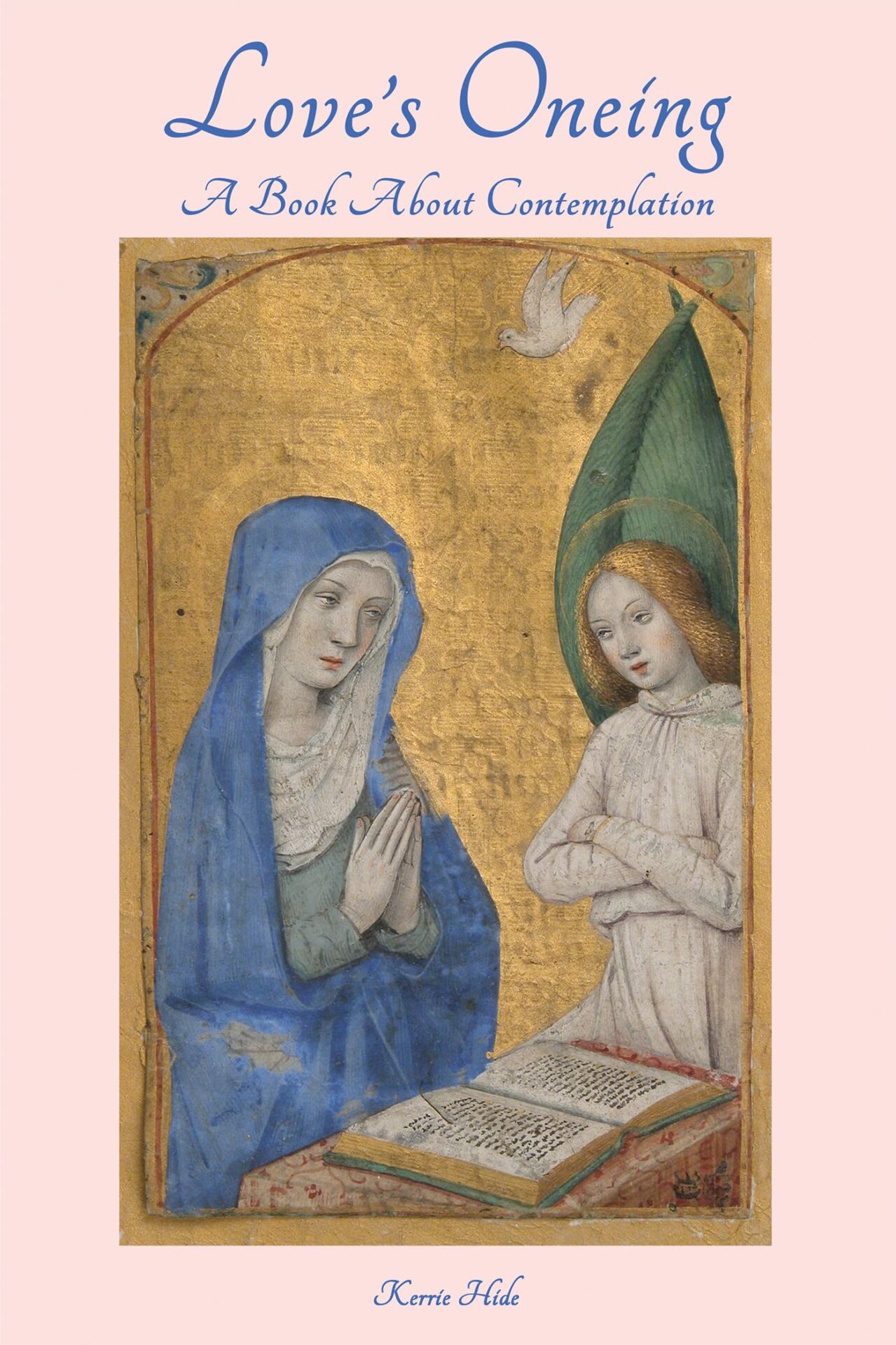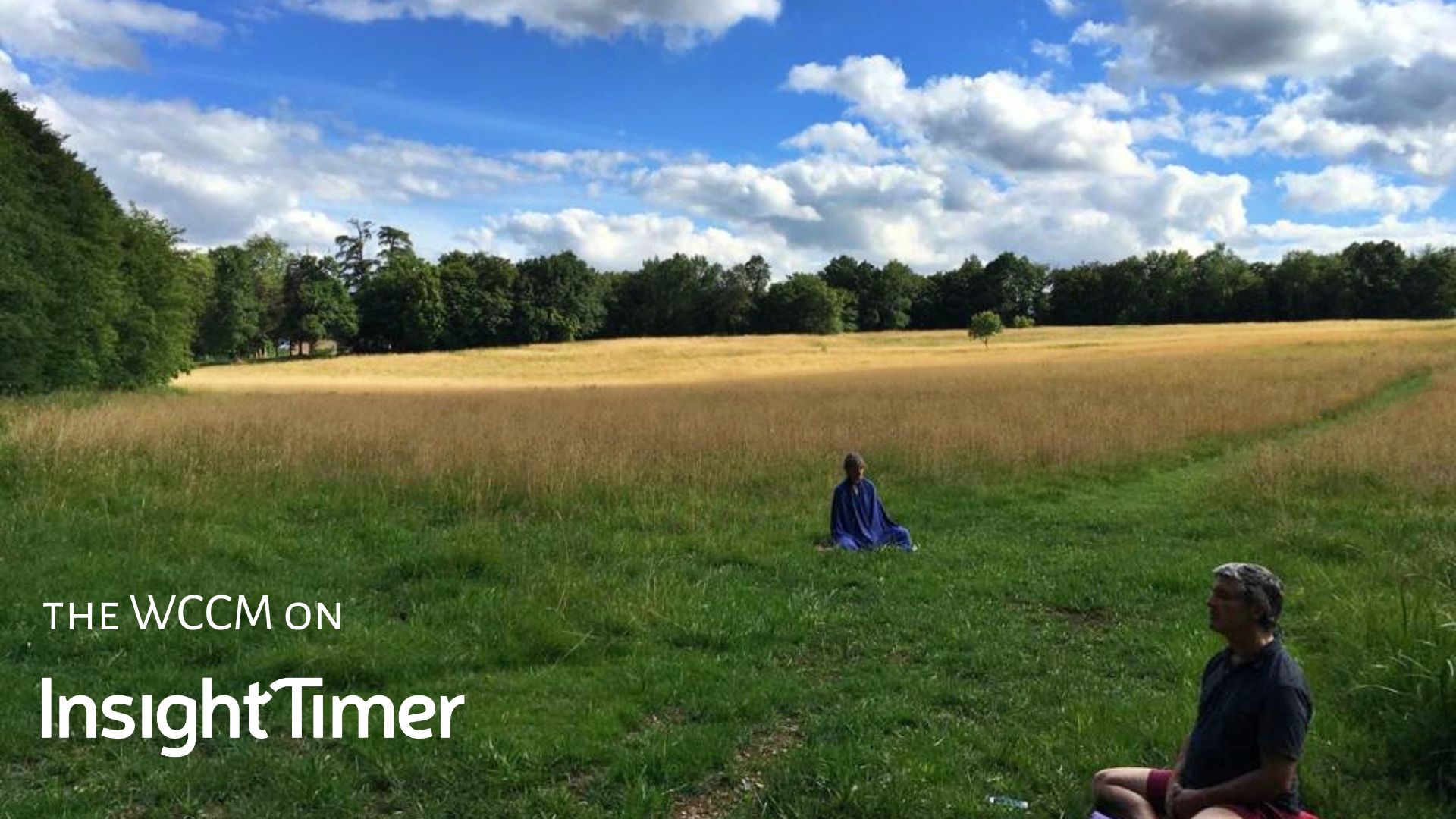This is a book that is at home in the heart as it is in the mind. Indeed, such binaries as these—i.e., heart and mind—make no sense in the long and rich tradition within Christianity that we have come to call “mystical,” which constitutes the focus of Kerrie Hide’s Love’s Oneing. In this widely ranging and deeply probing book, Hide does not simply chronicle this tradition, but invites us as readers into the experiential realities that animate that tradition. It is a book that often reminded me of Gerard Manley Hopkins’ wise poem on peace when the poet reminds us that
. . . when Peace here does house
He comes with work to do, he does not come to coo,
He comes to brood and sit.
In charting paths of her own inner journey with this wisdom tradition, Hide’s voice unsettles us from our complacencies about “the spiritual life,” reminding us—with Meister Eckhart—that we must cultivate “a bare mind” in order to open ourselves to birthing God. But to do this we must learn “to pay attention in the naked moment now.” The rest will follow.

What Hide offers with this absorbing book is more than an intellectual feat as an interpreter of this complex tradition, though it is surely this; she offers us a spiritual feast for heart and mind as well. I found myself pausing repeatedly as I read these densely hewn chapters, caught up in moments of discovery and startled into the experience of awe evoked both by the sources Hide invites us to explore and by her means of unveiling them.

In this sense, the experience of reading Love’s Oneing offers a profound embodiment of Julian’s notion, at the close of her Showings, that “this Book was begun by God’s gift and grace, but it is not yet performed” until we as readers draw that circle to its full span by engaging in our own experience of that gift.
In inviting us into what the author calls “the Christian contemplative tradition” we find ourselves lured into the progressive unfolding of insight, which Bernard Lonergan taught us to understand as “com[ing] as a release to the tension of inquiry.” Once one comes upon an insight—which we often experience as a new way of seeing coming upon us or transpiring within us—something fundamental shifts within us. While Lonergan identifies the origins of insight in what he describes, phenomenologically, as “a moment of relaxation” leading to a “discovery [that] is a new beginning,” Hide voices this conviction in a slightly different manner, recognising—rightly, it seems to me—that the pulse of deep understanding is fundamentally “kenotic.”
It calls us to empty ourselves of our certainties, even if these might be widely held to be true, or even “orthodox,” particularly if these are disjoined from experience—others’ and our own. For Hide, the beginning point is not about knowing, and thus the theological task before us is not that of gaining more, or better, or truer knowledge, but rather of entering into the experience of “beholding.” This leads us, she adroitly suggests, beyond what might well be the cautionary posture of a “hermeneutic of suspicion” into a “hermeneutic of beholding,” a participatory kind of knowing—Newman’s “grammar of assent”—by which we find ourselves nakedly “oned” with the One who “encloses” us in love.
This too, has roots in a phenomenological approach, and Hide draws on her own experiences in evocative personal vignettes that stand at the head of most of her chapters. But there is more to it than this: her approach as a writer takes us inside the “subject matter” she unfolds to the point that, little by little, we as readers become aware that we are the subject, not of this book but of our own experience of what these mystical voices point toward. And she does this in a way that reminds—re–minds—us of what it means to find ourselves “beheld” in our own lives and thereby invited to risk the “plunge into a subject-subject harmony” that is the heart of reality. Or, as she puts it brilliantly at the outset:
Now, it cannot be my task to explain this, and I am alert enough to realise that the very attempt at explanation runs against the grain of Hide’s purposes. That would be—here taking the word in its etymological roots—to “flatten out” what is a book that unfolds in a circling manner. Grounding her “book about contemplation” in Julian’s Showings, Hide elaborates in her richly nuanced opening chapter how Julian grounds her “revelations of divine love” in her own experience, and how she understood that experience not as normative but as paradigmatic: just as Julian found herself “enfolded in Christ” or “enclosed in God,” so this invites us to “behold” ourselves as “beheld” in God. Hide quite rightly sees Julian’s central claim, “I am the ground,” as foundational to the deep way of knowing which Julian describes as “gostely sight.” I would suggest that this phrase might be best rendered in contemporary English as “spiritual vision,” or even “insight,” a modern English word Julian could not have known, but one that reflects something she means to say—since this “deep seeing” is an “in-seeing” that must resist full explanation, as Julian suggests at the end of the “first showing” (Ch. 9 in the Long Text).
Julian’s point in the closing lines from that first “revelation” suggests something crucial about her wisdom: namely, in writing down her “showings”—or, as might have been the case, having them written down—Julian see the work of reading as if in a mirror, concluding as she does:
This is not simply a statement of the ineffability trope—that the depths of spiritual knowledge exceeds what language can say—but much more suggestively provides Julian with a strategy of reminding (re-minding) her readers that we are to enter this experience. We are to discover this wisdom not in our thinking but with the fullness of our lives.
My point in this excursus is to suggest something of how I found myself engaged by Love’s Oneing—as a book that consistently invited me, as a reader, to see how this wisdom longs to be “performed” within my own life. Hide accomplishes this in part through the layered voice she employs in unfolding the nine sources she explores in Love’s Oneing, engaging them as if in a conversation that includes us, her book’s readers, in the circle. One example among countless others: “Julian awakens our sensual imagination, until in the beholding we are drawn into an enclosure in the Christ, that immerses us in the secret depths of spiritual in-sight that continually unfolds the depths of Trinitarian loving” (my emphasis). Formulations like this one are found on every page, re-minding us that we—as the subjects of our own lives—find ourselves invited to journey into mystery, which is to say into the depths of our experience, which is to say into the depths of God, which is to say into the depths of “oneing love.”
The book, then, becomes not a descriptive manual telling us about these theologians and their mystical insights, but rather a kind of invitation to our own “beholding” in love. As a means of amplifying this stylistic approach, Hide adds a practical postscript to each chapter, entitled “praying contemplatively” in which she draws on the wisdom of the preceding discussion and invites us to allow ourselves to be drawn into the “thick texture” (Clifford Geertz) of the mystic’s vision—and our own. The effect of these mystical “interludes” is to invite us to practice what we have “experienced” in the preceding chapter.
The chapters that follow the foundational chapter devoted to Julian—“Beholding and Oneing”—turn to eight other mystics (with a trinitarian echo as three sets of three) to elaborate further dimensions of this experience. Throughout those chapters, Hide continually points out how Julian’s insights resonate with later sources, and are anticipated in earlier ones. Thus, in exploring three figures who pre-dated Julian—Meister Eckhart on “The Birth of the Word,” Mechthild of Magdeburg on “Flowing Sinking Enjoying,” and Clare of Assisi on “In the Vulnerable Embrace of Love”—Hide suggests how their own insights and approaches anticipated and amplified, if anachronistically, her wisdom. In turning to writers/seers who followed Julian, Hide explores the theme of “Following Love’s Stirrings” in the anonymous author of The Cloud of Unknowing, and then turns to John of the Cross and the theme “At the Time of the Rising Dawn” before bringing her study to a close by examining Teilhard de Chardin’s notion of “Centre to Centre,” Beatrice Bruteau’s understanding of “Enstatic-Ecstatic Communion,” and, finally, the contemporary Franciscan theologian Ilia Delio’s exploration of “A Holy Wholeness.”
This is a book that reflects a lifetime of theological pondering in dialogue with spiritual praxis. Hide offers the fruit of her long musing with writers who have charted currents in the deep ocean of divine wisdom, engaging them in and through her own manner of living out that vision. The whole texture and telos of the book reverberates in the claim Hide makes at the outset:
When, in silence and stillness we turn into the ground of our own heart, lean into the silence of the Word spoken from the divine silence, yield beyond into naked awareness, repose in open receptivity and awaken the eye of our heart that is nakedly aware, in the illuminating darkness, we realise the energy of the divine desire expressed in this prayer is already within us.
In this sense, Hide beckons us not simply to read or think about the insights of the nine sages she explores, but invites us to live our way into the experiential paths they have blazed. And to listen into the deep silence out of which the Word longs to be born—again and again—in us.
Two small puzzlements emerged for me in the wake of “experiencing” this profound book. The first is a matter of nomenclature: it seemed to me that titling this “a book of beholding” would have avoided the confusion that the word “contemplation” has come to have in contemporary English usage, precisely because the former is a distinctly somatic word in ways distinctly different than the latter. Many of Julian’s recent translators—Hide excepted, I should add—render this central word in her vocabulary (from an ancient West Saxon root “behealdan,” meaning “to hold in view”) as “contemplate” (from the Latin contemplatio meaning “the act of looking at” something). The choice is understandable, but at the same time confusing and thus regrettable as the latter suggests the very subject/object differentiation Hide—and the theologians she engages—is so intent on arguing against.
The second point is a matter of the socio-cultural position these so-called “mystics” played in their own societies. Hide leaves this matter entirely unstated, and readers without an awareness of the larger historical frame within which these persons lived and worked might presume that the role of “mystics” and the place of “mysticism” was uncontested in its own day—and remains so in ours. Nothing could be further from the truth, as Hide surely knows. For while this may be the case in such a positive appropriation of these sources as we find here, many of these theologians faced harsh criticism—and worse—from their contemporaries. Several were formally denounced for holding heretical views, and others were silenced by their superiors and forbidden to teach theology in a formal sense. The fact that Julian escaped censure, given the radical nature of her view that there is “no forgiveness”—because there is no blame—in God, is probably circumstantial, given the narrow transmission history of her “revelations.”
The critical point that needs to be made is that these “mystical” voices often represented—and still represent—a contested point of view in the face of the church’s—and churches’—institutional structures of authority. Their courage in giving voice to the truths they unveiled is and remains impressive and important in its own right. Why is this noteworthy? Because it reminds us of the risk many of these “mystics” willingly took in their own lifetimes, facing as they often did the disapproval, dismissal, and censure of their contemporaries, above all those in positions of hierarchical authority—bishops and popes, councils and inquisitorial courts, altogether too often intent on maintaining the privilege of their own power against any witness to liberating truth.
If anything, being aware of this elevates the precarious role such voices and texts had and, in some cases, continue to have, an important reminder not merely about the power that is always at play in theological discourse, but about the dangerous pressures that non-binary, exclusivist, colonialist approaches exert in the world, not only in the past but in our own societies. This reminder underscores in my mind the significance of Hide’s approach, but also its vulnerability toward present proponents of “binaries” in today’s mainstream of church and society—heresy/orthodoxy; gay/straight; colonized/colonizers; etc. Such countervailing voices that increasingly advocate violence are not simply a marginal problem for those, who like these mystics, are intent on opening us to “love’s oneing.”
Such critical questions should not, however, diminish the profoundly moving experience set in motion by Love’s Oneing, rooted in Hide’s conviction that “Logos fullness awakens Sophia-Wisdom.” Although only briefly mentioned in the Introduction, almost as a passing remark, the authorial approach Hide takes throughout this study allows this wisdom to implicitly emerge for readers who dare to “perform” Hide’s book. How is this to happen? Suggestively, Hide puts it this way: “This way of knowing through beholding in such a way that the Word says itself through our words and deeds, we could say, creates a metaphysics of oneing.” The “hermeneutic of beholding” undergirding that metaphysic was the experience that exerted an irresistible draw on me as I felt myself lured ever more deeply into what Hide calls “the ground of the heart”—which, as she recognises in concert with these nine interlocutors, is the “ground” in which we discover that God and the self, God and the other, God and creation, are one ground. And in that realisation we come to experience, beyond knowing, that we are not “the alone with the Alone,” as Plotinus had suggested, but rather are the “oned” with the One.








3 thoughts on “Kerrie Hide, Love’s Oneing. A Book about Contemplation.”
This review sounds like this book by HIde might be a good guide for someone who already has background knowledge about the mystics that she describes. I will put this on my list of “must reads.”
Must read – agreed!
The phrase from this review’s ‘ are to perform’ spoke volumes to me. For many years now I have been beckoned to trust being invited into the experience of ‘oning’. The pain of the crippling fear around this experience were many. Often it was during directed retreats that I came to experience ONING. I came to experience and realise that the Beloved was there with me guiding me to surrender and trust the experience.
My advice is: trust that the. Beloved will accompany you on this sacred journey.